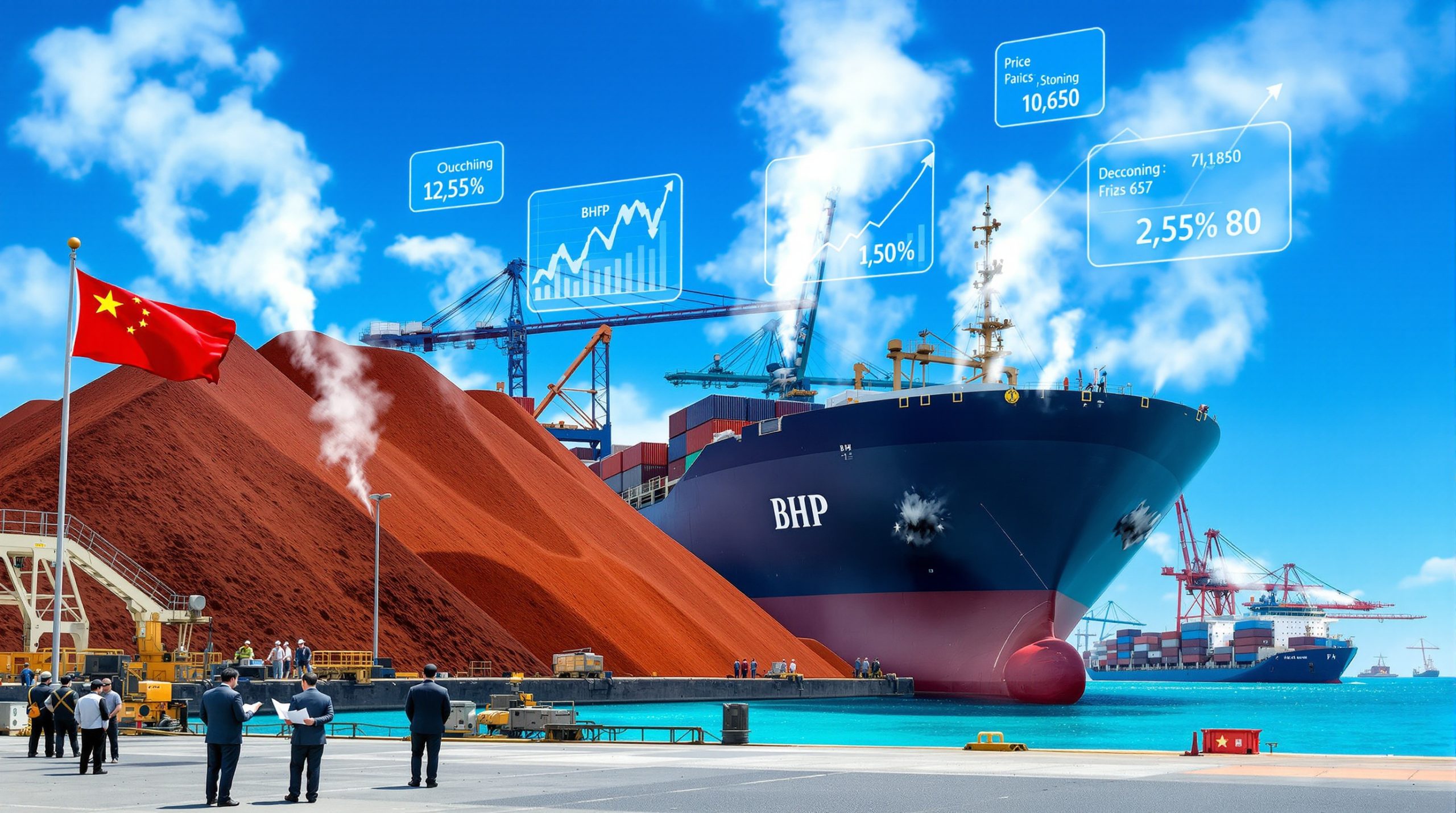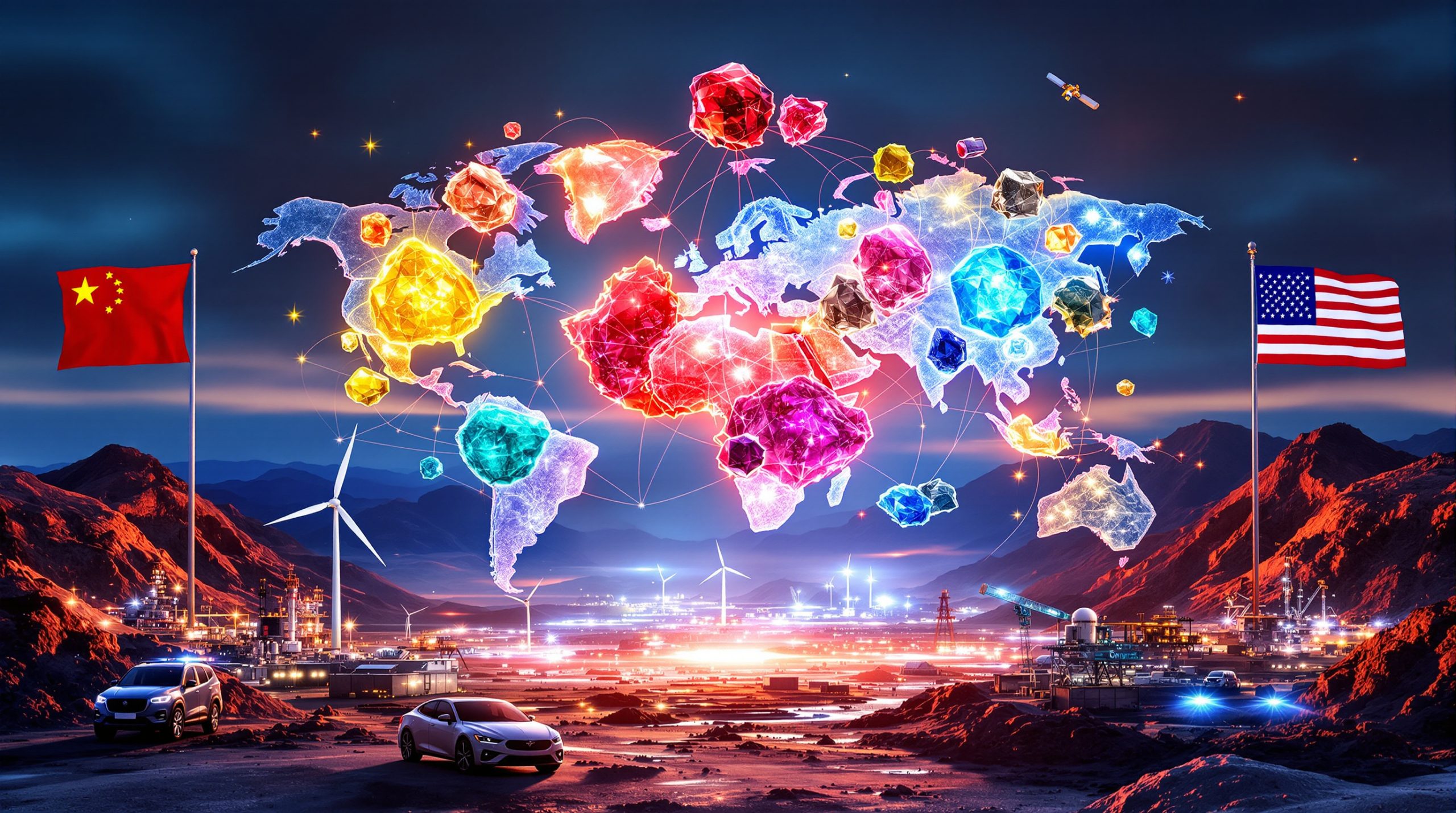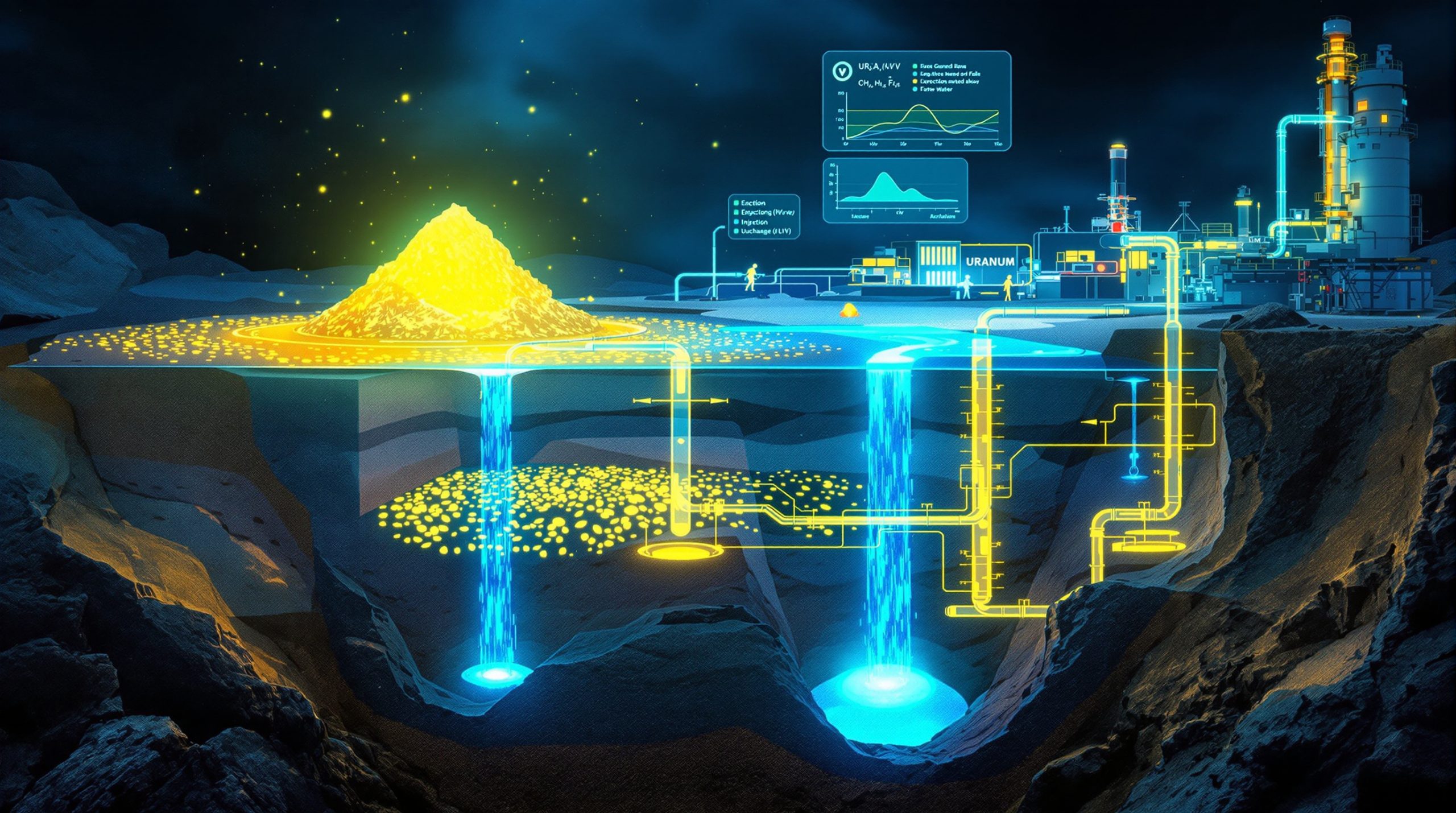China's Latest Rare Earth Export Restrictions: Impact on South Korea and US Defense
China's recent export restrictions on rare earth elements represent a strategic move in the ongoing economic tensions with the United States. By specifically targeting South Korean manufacturers who supply components to US defense contractors, Beijing has escalated its use of economic leverage against Washington and its allies. These restrictions not only highlight China's dominance in the global rare earth reserves but also expose vulnerabilities in global technology production and defense systems.
What Are China's Latest Rare Earth Export Restrictions?
China's Commerce Ministry has implemented unprecedented export controls on rare earth elements, directly warning South Korean manufacturers against supplying products containing Chinese rare earths to US defense contractors. The formal letters sent in April 2025 explicitly targeted companies producing critical components for defense and high-technology applications.
China's New Export Controls on Rare Earth Elements
Beijing's restrictions specifically target rare earth materials used in weapons systems, advanced electronics, and high-tech consumer goods. These measures were implemented as a direct response to US tariffs under President Trump's administration, representing a calculated escalation in the ongoing trade tensions.
The restrictions focus primarily on processed rare earth materials rather than raw ores, targeting the high-value supply chain where China maintains its strongest advantage. Products containing neodymium, dysprosium, terbium, and other critical elements face strict export licensing requirements, effectively creating a chokepoint for defense-related manufacturing.
China's approach demonstrates sophisticated targeting, focusing on "chokepoint" materials where alternatives are limited and substitution is technically challenging or prohibitively expensive.
South Korean Companies Targeted with Direct Warnings
The warnings from China's commerce ministry specifically targeted Korean manufacturers involved in producing power transformers, batteries, displays, electric vehicles, aerospace equipment, and medical devices. Companies like Samsung, LG, SK Hynix, and Hyundai Heavy Industries received explicit notifications that violations of these new export controls could result in substantial sanctions.
Hyundai Heavy Industries has already halted shipments of naval radar components to the US due to these restrictions, demonstrating the immediate impact on defense supply chains. The formal warnings included language suggesting potential financial penalties and market access restrictions for non-compliance.
Why Is China Targeting South Korean Manufacturers?
China's strategy of targeting South Korean manufacturers represents a sophisticated approach to disrupting US defense capabilities without direct confrontation with Washington.
Strategic Pressure on US Defense Supply Chain
By targeting South Korean intermediaries, China aims to disrupt the flow of critical materials to US defense contractors without directly challenging US companies. South Korean firms supply approximately 15-20% of specialized components for US F-35 fighter jets, which depend heavily on rare earth elements from China.
The strategy leverages China's dominant position in the rare earth supply chain, where it controls 85% of global processing capacity. By pressuring South Korean manufacturers, Beijing can indirectly impact US defense readiness without triggering immediate retaliatory measures against Chinese firms.
Defense analysts note that rare earth restrictions could potentially delay production of critical US weapons systems by 12-18 months while alternative suppliers are developed.
Economic Leverage Against US Allies
South Korea represents a critical manufacturing hub for components used in US defense systems, with over 70% of its rare earth imports originating from China. This dependency creates significant vulnerability that China is now exploiting.
By placing South Korea in the difficult position of choosing between Chinese markets and US defense contracts, Beijing demonstrates its willingness to use economic pressure against US allies. This approach aims to fragment the US-led alliance system by exploiting economic interdependencies.
"By pressuring Seoul, Beijing indirectly strains US defense readiness while testing the resilience of Washington's alliance network," explains a Georgetown University trade policy report.
How Critical Are Rare Earth Elements to Modern Technology?
Rare earth elements, despite their name, are relatively abundant in the Earth's crust. However, their unique properties make them irreplaceable in many advanced technologies.
Essential Components in Defense Applications
Modern defense systems are extraordinarily dependent on rare earth elements. A single F-35 fighter jet requires approximately 417 kg of rare earths, while an Arleigh Burke-class destroyer uses around 2,800 kg for various systems.
These elements are crucial for manufacturing precision-guided weapons systems, where neodymium magnets provide unmatched performance in small motors and actuators. Radar systems depend on rare earth components for signal amplification, while electronic warfare equipment requires specialized materials for jamming and detection capabilities.
Military aircraft, ships, and ground vehicles rely heavily on rare earth-based components for everything from navigation systems to communication equipment. Samarium-cobalt alloys are particularly important for high-temperature applications in aerospace, where performance reliability is mission-critical.
Civilian Technology Dependencies
The dependency extends well beyond military applications. Electric vehicle motors consume 1-2 kg of neodymium per unit, with global demand projected to triple by 2030. This growing civilian market creates additional pressure on already strained supply chains.
Consumer electronics including smartphones, computers, and audio equipment depend heavily on rare earth elements for miniaturization and performance. A single smartphone contains small amounts of neodymium, dysprosium, terbium, and yttrium.
Medical equipment such as MRI machines utilize large rare earth magnets that require up to 700 pounds of neodymium per unit. "There's simply no substitute for rare earths in compact high-performance magnets," states a MIT materials science study, highlighting the technological dependency that China is leveraging.
What Is China's Position in the Global Rare Earth Market?
China's strategic dominance in rare earth elements represents decades of deliberate industrial policy and investment.
China's Dominant Market Share
China currently refines approximately 85% of global rare earth elements and controls around 70% of mining output, despite possessing only about 37% of known global reserves. This disproportionate control stems from Beijing's long-term strategic investments in mining, processing, and manufacturing.
The United States imports 80% of its rare earth materials from China, despite holding an estimated $1.5 trillion in domestic reserves. This dependency has developed over decades as Western nations outsourced mining and processing due to environmental concerns and economic factors.
"China's monopoly stems from decades of subsidized production and environmental deregulation," notes the US Geological Survey, highlighting how Beijing prioritized developing this strategic resource while other nations focused elsewhere.
Beijing's "Rare Earth Industry Development Plan 2025" allocates $10 billion to advanced separation technologies, further cementing its technological lead in processing these critical materials.
Historical Use of Rare Earth Export Controls
China has demonstrated its willingness to use rare earth exports as geopolitical leverage in the past. In 2010, China cut rare earth exports to Japan during a territorial dispute over the Senkaku/Diaoyu Islands, causing a ten-fold price surge for elements like dysprosium.
That crisis prompted Japan to invest heavily in rare earth recycling and alternative sourcing, reducing its dependency from 90% Chinese supply in 2010 to approximately 60% today. However, most nations remain far more vulnerable than Japan.
China briefly restricted rare earth exports to the United States in 2019 during earlier trade tensions, sending a clear signal about its willingness to leverage its dominant position. These precedents establish a pattern of using resource control as an instrument of economic statecraft.
How Might This Impact US-China Relations?
The rare earth restrictions represent a significant escalation in an already tense relationship between the world's two largest economies.
Escalation of Trade Tensions
The restrictions follow US President Trump's implementation of new tariffs, creating a cycle of retaliation that threatens global trade. The US Department of Defense has already allocated $1.2 billion in 2024 to rare earth stockpiling, a 300% increase from 2020 levels.
What distinguishes this escalation from previous trade disputes is the direct targeting of defense supply chains, indicating a shift toward national security concerns rather than purely economic competition. "This is economic statecraft with military implications," warns a Council on Foreign Relations analysis.
Bilateral trade between the US and China has already declined by 18% since 2023 due to tariffs and other restrictions. The rare earth dispute threatens to accelerate economic decoupling between the world's largest economies.
Potential for Further Retaliatory Measures
The US may respond with additional sanctions or export controls targeting Chinese technology firms or financial institutions. Section 889 of the 2024 National Defense Authorization Act already bans Chinese rare earths in sensitive defense systems by 2026, creating compliance challenges for contractors.
Western nations are likely to accelerate efforts to develop alternative supply chains, with Lockheed Martin's 2025 contract with Australian mines representing an early example of this shift. The US government has identified 50 critical minerals where foreign dependency creates strategic vulnerabilities.
This cycle of retaliation risks further economic decoupling, with companies increasingly forced to choose sides in an increasingly bifurcated global economy.
What Are the Implications for Global Supply Chains?
The rare earth dispute highlights fundamental vulnerabilities in globalized production systems that have prioritized efficiency over resilience.
Disruption of Manufacturing Networks
South Korean manufacturers face difficult choices between maintaining access to Chinese materials and serving US defense contracts. According to industry estimates, diversifying supply chains could increase manufacturing costs by 20-35%, significantly impacting profit margins and consumer prices.
Companies may need to establish parallel supply chains to serve different markets, with products destined for US defense contracts manufactured in facilities using non-Chinese materials. This redundancy introduces inefficiencies but may become necessary for regulatory compliance.
Fortune 500 manufacturers report that 78% are actively developing contingency plans for critical mineral shortages. Blockchain pilots by companies like BMW and Siemens now track rare earth provenance to ensure compliance with increasingly complex regulations.
Acceleration of Supply Chain Diversification
Western nations are rapidly increasing investments in domestic rare earth production, though developing competitive alternatives will require years of sustained investment. The separation of rare earth elements is technically challenging, with China maintaining significant technological advantages.
Countries like Australia, Canada, and the US are fast-tracking mining projects, with Australia's Arafura Resources beginning production of NdPr oxide in 2024, though this represents just 5% of global demand.
Processing capacity outside China has become a strategic priority, with the US Critical Minerals Initiative funding 12 new mines since 2023, targeting 50% self-sufficiency by 2030. However, building processing facilities requires specialized knowledge and substantial investment.
Apple's 2024 shift to recycled rare earths in iPhones demonstrates how companies are responding, cutting Chinese sourcing by 40% through urban mining of electronic waste.
How Are Countries Responding to Rare Earth Supply Vulnerabilities?
Nations are pursuing multi-faceted strategies to reduce vulnerability to Chinese rare earth dominance.
US Strategic Initiatives
The US has explicitly identified rare earth dependency as a national security concern, implementing a comprehensive strategy to reduce vulnerability. The Defense Production Act has been invoked to support domestic rare earth mining and processing projects.
Legislation has been introduced to provide tax incentives and regulatory support for domestic rare earth production, with bipartisan support for reducing strategic vulnerability. The Pentagon has established a rare earth stockpiling program to ensure short-term availability during supply disruptions.
Strategic partnerships with allies including Australia, Canada, and Japan are being strengthened to secure alternative supplies. The Quad alliance (US, Japan, Australia, India) has established a critical minerals race working group specifically focused on rare earth supply security.
South Korea's Difficult Position
South Korea faces perhaps the most challenging position, balancing extensive economic ties with China against its security alliance with the United States. Korean manufacturers are caught between competing regulatory regimes, with significant exposure to both markets.
The South Korean government has established a $3 billion Rare Earth Reserve Fund, aiming to secure 90-day stockpiles by 2026 as a buffer against supply disruptions. This represents an immediate mitigation strategy while longer-term alternatives are developed.
Korean companies have accelerated investment in recycling and materials efficiency, seeking to reduce overall rare earth consumption. Leading firms are also exploring investments in non-Chinese mining operations to secure alternative supplies.
Global Efforts to Reduce China Dependency
International partnerships are forming to develop alternative rare earth sources, with the European Raw Materials Alliance coordinating efforts across 30 countries. The Japanese model of strategic stockpiling, recycling, and diversification offers valuable lessons for other nations.
Investment in recycling technologies is increasing, with bioleaching technologies at Stanford University recovering 95% of rare earths from electronic waste. European Commission projections suggest recycling could meet 30% of rare earth demand by 2035.
Research into substitute materials is accelerating, though finding alternatives with equivalent performance remains challenging. For many applications, rare earth elements possess unique properties that make substitution difficult or impossible with current technology.
The Path Forward: Adapting to Resource Nationalism
China's rare earth restrictions represent a new chapter in resource nationalism, where control of critical minerals becomes a tool of geopolitical competition. This shift demands strategic responses from governments, companies, and consumers.
For defense contractors and high-technology manufacturers, securing reliable supply chains will require greater vertical integration and direct investment in mining and processing. The era of just-in-time global sourcing for critical materials appears to be ending, replaced by more resilient but potentially more expensive arrangements.
Governments must balance economic efficiency with strategic security, making difficult tradeoffs between market principles and national resilience. This balance will shape industrial policy for decades to come, as nations adapt to a world where resource access can no longer be taken for granted.
The rare earth dispute may ultimately accelerate beneficial innovations in recycling, material science, and supply chain transparency. However, the transition period presents significant challenges for global technology development and defense readiness in an increasingly uncertain world. Investors and policy makers need to develop effective geopolitical market strategies to navigate this complex landscape, while taking advantage of emerging global commodities insights to inform their decisions.
Looking for an Edge in Commodity Market Investments?
Gain immediate alerts about significant ASX mineral discoveries through Discovery Alert's proprietary Discovery IQ model, which transforms complex geological data into actionable investment insights. Visit the dedicated discoveries page to understand why major mineral discoveries can lead to exceptional market returns, and position yourself ahead of other investors.




